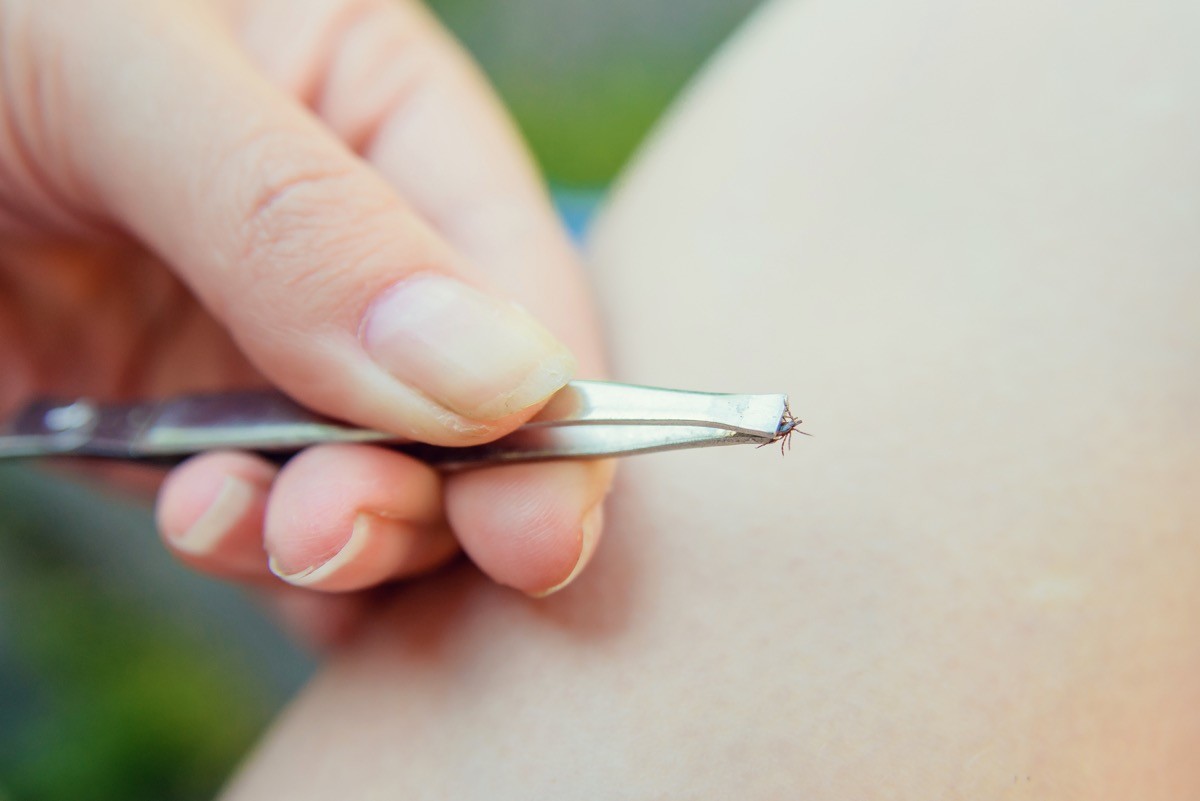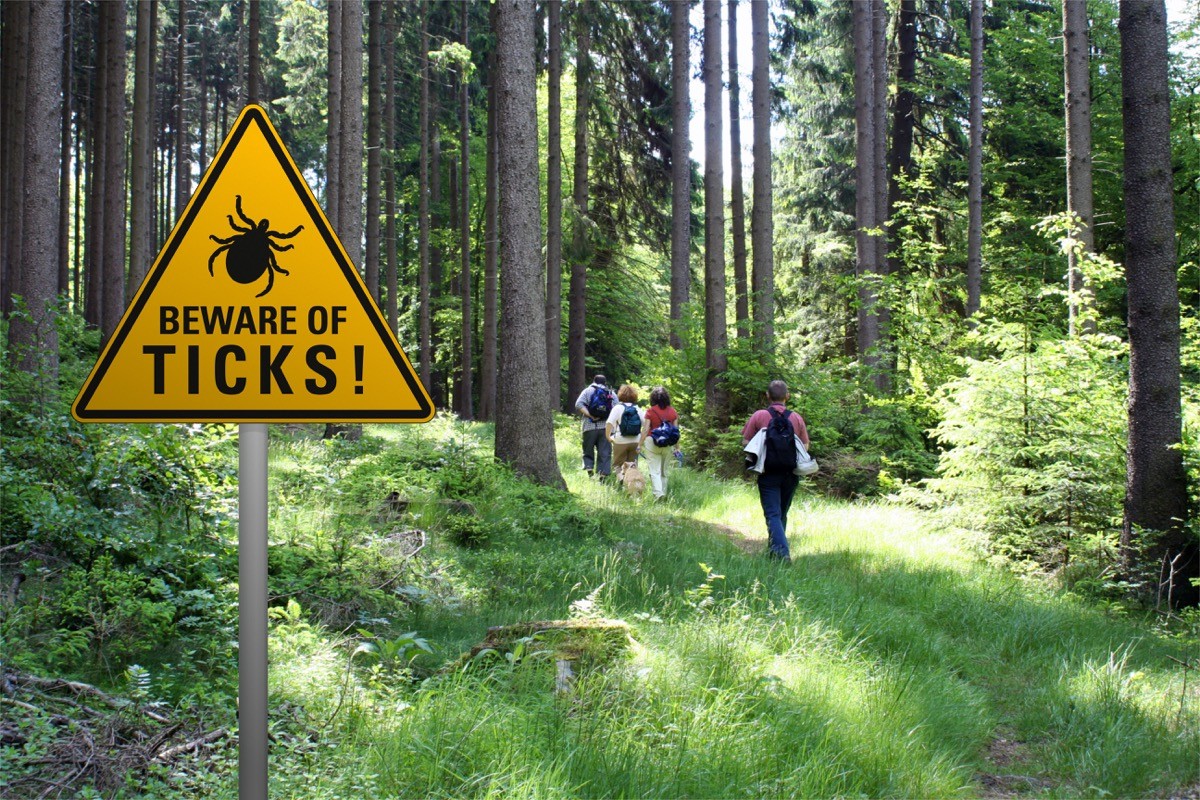Doctor Shares Easy Way to Protect Against Ticks While Hiking

Hiking is one of the best ways to get a good workout in the fresh air—but ticks can make the experience a lot less fun. “Ticks can be active year-round as long as the temperature is above freezing, but ticks are most active in the warmer months of spring, summer, and early fall,” says the National Forest Foundation. “Ticks aren’t only out in the woods; many people are bitten by ticks in their own neighborhoods and backyards.” So how can you keep these creepy little critters away from you? Here’s what the experts recommend.
RELATED: 13 Amazing Benefits of Hiking.
Protect Yourself From Pesky Ticks

Take precautions before you hit the trails. “There are several precautions to take before you hit the trails that can prevent bites,” pediatric infectious disease specialist Priya Soni, MD, tells Cedars-Sinai Newsroom.
- “Wear long-sleeved shirts and long pants.
- Tuck the bottom of your pants into your boots or socks.
- Apply tick repellent to clothing. Products with DEET will repel ticks and products with permethrin will kill ticks on contact.
- Avoid hiking in tall grass or heavily wooded areas because ticks tend to live and thrive in those areas.
- Try to hike in the center of the trail to reduce contact with ticks.”
Stick To the Trail

Try to avoid bushy areas when hiking. “There are simple rules one can follow to drastically reduce the chances of tick bites,” Rafal Tokarz, PhD, assistant professor of epidemiology at the Mailman School of Public Health, tells Columbia Doctors. “For instance, when walking through the woods, avoid brushy areas and stay on the path. Ticks tend to be found on the leaf litter and on short brushy growth at the edges of the path. Some people think that ticks can jump, but that’s false. They just hang around with their front limbs up in the air, waiting for anything to touch them, at which point they grab on. So, sticking to the path makes it highly unlikely that a person will get bitten.”
Wear Light Clothing

Wearing lighter clothing can help you spot any marauding ticks sooner. “Long pants and long sleeves, while uncomfortable in hot conditions, offer additional protection; the physical barrier they create gives a person extra time to spot a tick,” Dr. Tokarz says. “Applying various repellants to clothing also adds protection, but it is key to apply repellants to shoes and pants, which is where ticks first grab onto the host.”
Inspect For Ticks

Always check yourself for ticks after a hike. “The best place to inspect for ticks is in the shower. When you are inspecting your child, check around the ears, near the hairline, under the arms, behind the legs and even inside the belly button because ticks like those crevices.”
RELATED: How to Find and Remove Ticks From Dogs.
Argh! A Tick!

If you see a tick, try to gently remove it. “To remove a tick use a tweezer, and you want to apply the force of the tweezer at the base of the tick and pull up. You don’t want to twist the tick off because you can leave parts of the tick inside embedded in the skin. If a tick is noticed within 24-hours of the hike or bite, and you are able to successfully remove it, the risk of transmission of any tickborne disease is very, very low.”
Ticks Are Trouble

Unfortunately, Lyme is not the only disease ticks can spread. “Ticks that carry the bacteria that cause Lyme disease can also carry other bacteria and cause infections known as Anaplasmosis and Ehrlichiosis. Symptoms of both can include fever, muscle aches, weakness and headache. Unlike Lyme disease, a rash is not as common. Symptoms usually occur one to two weeks after a bite from an infected tick. In both cases, they can be treated with proper antibiotics. Not every bite from an infected tick however, results in an infection.”
Check Your Pets

Check your dogs for ticks. “Pets can also transport ticks from outdoors to indoors,” Dr. Tokarz says. “Ticks can grab onto an animal and crawl around without attaching for a while. If this animal then goes indoors and somehow knocks the tick off, the tick can subsequently grab onto something else, including the pet’s owner.”